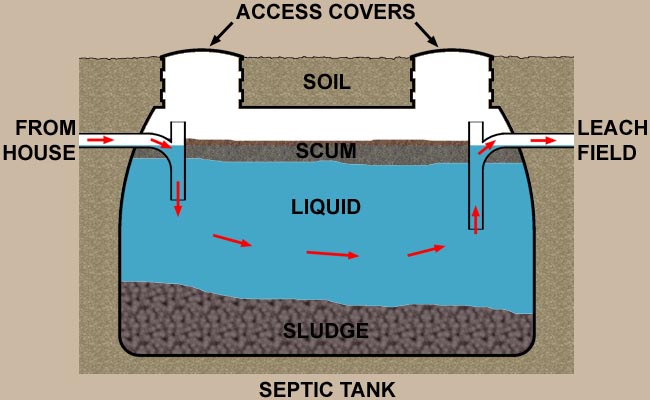The following is provided as a basic overview of septic system components and operation; for
more details about septic systems, see the
Inspectapedia website.
Septic waste water systems consist of three major parts. 1) The drain/vent system in the home,
2) the septic tank, and 3) the leach field (a.k.a. drain field).
1) The drain/vent system within the home is the same in a septic system as that which is utilized
in homes on city sewer systems.
2) The septic tank receives the solid/liquid wastes from the home drains. This is where time and
natural microbial action act to break down wastes into substances that can be safely discharged
into soils. Within the septic tank, there is a layer of "scum" that consists of wastes that are
less dense than water, and so floats at the top of the tank. In the bottom of the tank is a layer
of "sludge" consisting of waste materials that are more dense than water. Between the scum and
sludge is a layer of relatively pure water that only has fine suspended particles. The tank has
baffles and pipe connections that allow water from the relatively clean middle layer to be
displaced out into the leach field when new waste water enters the tank, preventing any of the
scum or sludge from leaving the tank. The tank also has cleanout connections on the top of the
tank to allow the contents of the tank to be pumped out.
3) The water exiting the septic tank flows out to the leach field. The leach field consists of
an array of buried perforated pipes within a gravel bed or under plastic diffusers that allow
the water from the septic tank to be distributed and absorbed into soils.
The size of the septic tank is typically dictated by the size of the home. The more occupants
a home has, the larger the septic tank should be. The size of the leach field is dictated by
both the size of the septic tank and by the area soil conditions (how quickly soils can absorb
the water discharged into them).


